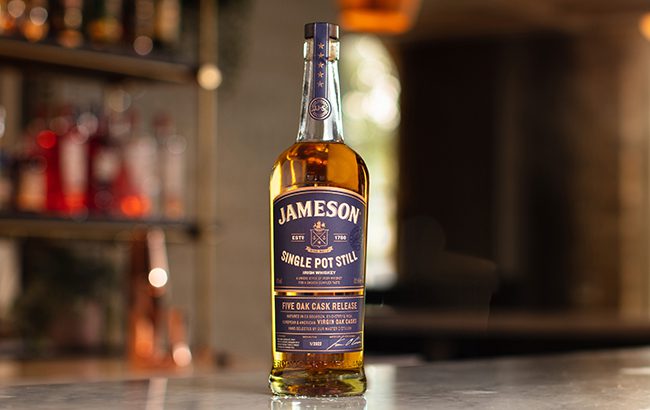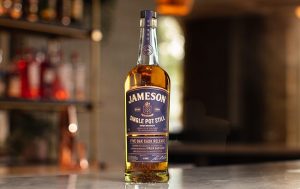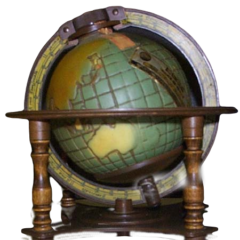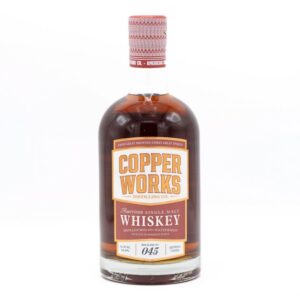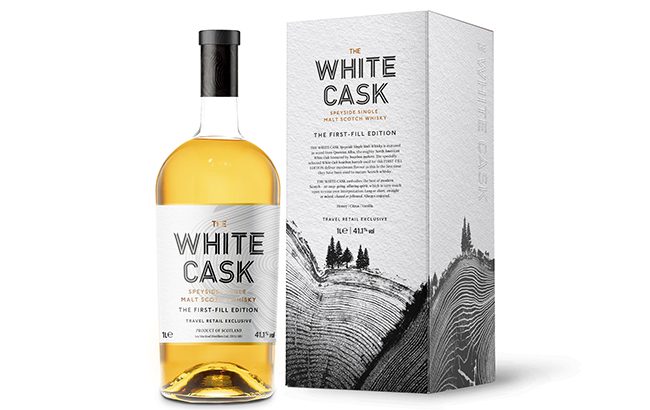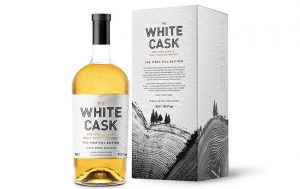A great vacation doesn’t have to be all about whisky, but a wee dram or artisanal cocktail along the way certainly enhances the experience. The best getaways for whisky lovers combine cozy lodging with fun activities, delicious food, warm hospitality, and of course an excellent selection of whiskies. Such great escapes can be found all over the country and around the world—you can squeeze in a bit of fun on a long weekend or fly across the Atlantic to sojourn in the British Isles. Whether you a choose trip focused on skiing, fishing, hiking, golfing, or just relaxation with cooking classes and spa treatments, fabulous whisky-fueled adventures await. We’ve chosen 10 of the best such getaway options.
Sea Island—Sea Island, Georgia
For nearly a century, Sea Island Resort has been one of America’s most venerable vacation venues. The resort features endless choices, with two separate hotels—The Lodge and The Cloister—as well as golf cottages and a wide variety of rental-home accommodations, an acclaimed spa, and over a dozen dining and drinking spots spread across this huge coastal property.
Sea Island is a legendary golf destination, with a new state-of-the-art performance teaching center, grass putting course, and three 18-hole layouts that host the annual PGA Tour RSM Classic. But non-golfers will never feel excluded here. The place has five miles of pristine private beach, biking, boating, inshore and offshore fishing, falconry, a formidable tennis center with 16 clay courts, horseback riding, shooting sports, scenic and cocktail cruises, pools, and an array of watersports including kayaking, stand-up paddleboarding, bodyboarding, kiteboarding, and numerous guided paddling tours. The schedule of daily events offers tours, excursions, and guided activities, while the beach club, spa, and fitness center are all world class. There is even bowling and an evening bagpiper!
All of these activities can leave guests thirsty, which is probably why the main bar at The Lodge, the Oak Room, serves several hundred bourbon Old Fashioned cocktails each day, and offers numerous private label single cask pours including Woodford Reserve, Weller Single Barrel Reserve, and Buffalo Trace. This is the South, so bourbon is king, but the resort typically offers 60 to 70 whiskies, including rye, scotch, and Japanese labels.
The Lodge also barrel-ages house cocktails, and the signature is an Old Fashioned served at the resort’s high-end steakhouse, Colt & Alison. Aged in a five-liter oak barrel to bring out more vanilla and spice notes, it is made using Resurgent rye from Atlanta’s ASW Distillery.
Off-season hotel rates start around $650 per night per couple, $1,000 in prime summer.
The Fife Arms—Braemar, Scotland
Old meets new at this boutique property that opened three years ago in the Scottish village of Braemar, birthplace of the country’s famed Highland Games. The former coaching inn and hunting lodge is a local landmark built in 1856. Its owners are Iwan and Manuela Wirth, founders of the renowned international art gallery Hauser & Wirth, who oversaw a meticulous restoration, showcasing more than 14,000 historic objects and artifacts. The result is modern luxury with 19th-century Highlands flair, including plenty of tartan and museum-quality Scottish artwork. All 46 rooms at this escapist, romantic hotel are unique, and the gardens were designed by the same landscape architect used by Prince Charles. A vast slate of outdoor activities is on offer, including guided hiking, E-biking, and horseback riding. Try fly-fishing on the River Dee, one of the world’s most famous salmon spots, with sea and rainbow trout as well. A five-minute walk connects to the trails of stunning Cairngorms National Park, with hikes for all abilities. The welcoming 18-hole Braemar Golf Club is nearby, and other options include off-road 4×4 safaris via Range Rover, tours of Balmoral Castle (the royal residence in Scotland), and the nearby Royal Lochnagar Distillery.
But you don’t have to leave The Fife Arms to dive deep into Scotland’s most famous product. The hotel’s Bertie’s Whisky Bar features 365 labels from around the world, overseen by whisky ambassador Katy Fennema. She offers several themed four-dram flights, guided tastings, a food and whisky pairing workshop, and a combined contemporary architecture/fine whisky tour at Macallan Distillery’s new visitor center. The signature at Bertie’s is Fife Arms Braemar whisky, a proprietary blended malt from Adelphi Distillery created to commemorate the opening of Bertie’s in 2021. The whisky aims to imitate the style and flavor of those from the late Victorian and Edwardian eras when the hotel was built, mixing sherry-cask finished Highland malts with smokier variations from Ardnamurchan Distillery on Scotland’s remote west coast.
Packages including one 3-course dinner and one 4-dram tasting per stay start at around $650 per night per couple.
Steamboat Bay Fishing Club—Noyes Island, Alaska
Alaska is the gold standard for salmon fishing and home to numerous angling lodges, and Steamboat Bay Fishing Club—situated on an island off the coast of Alaska about halfway between Seattle and Anchorage—is the finest. Steamboat Bay runs on the same all-inclusive model as the best African wildlife safari lodges, but instead of offering a private ranger and Land Cruiser, each room here comes with its own fishing guide and a 27-foot heated cabin cruiser equipped with a bathroom and tackle. This coastal spot on the edge of the Pacific offers exceptional fishing, especially for prized Chinook (King) and Coho (Silver) salmon, as well as halibut. Rates include on-site processing of all catch into steaks or filets, which are flash frozen and packed in custom freezer boxes to take home.
Non-fishing activity options range from sea kayaking, whale watching, and nature walks to cigar smoking and hot tubbing. Seaplane transfers into this remote island lodge are included in rates, as are all gourmet meals and the top-shelf open bar. The list changes but always includes many bourbons, like Maker’s Mark, Knob Creek, and Woodford Reserve; scotch, including Macallan 12 year old, Lagavulin 16 year old, and Johnnie Walker Gold; as well as rye, Canadian, and Irish options. But the local favorite is Alaska’s own Port Chilkoot Boatwright bourbon, by itself or in local takes on the classic Old Fashioned or Manhattan. A special Drink of the Day often features it. One example is the Grapefruit Ginger Beer Bourbon, made with Boatwright bourbon, grapefruit juice, and ginger beer. There are just six rooms in the lodge and a single eight-bedroom residence.
Steamboat Bay is open seasonally from June to August and rates for two, three, and four-day all-inclusive stays begin at about $2,600 per night per person.
The Lodge at Blue Sky—Wanship, Utah
Born in the Napa Valley, Auberge Resorts is famously associated with wine, but at this ranch-style property outside Park City, the focus is squarely on whiskey. That’s because The Lodge at Blue Sky, a 3,500-acre resort community, includes both the Auberge Lodge at Blue Sky and High West’s distillery just down the road. High West began with a tiny facility whose claim to fame is being the world’s first “ski-in gastro-distillery,” at the base of one of the runs at Park City Resort, the nation’s largest ski area. The newer location at Blue Sky is far larger and features organized tours and tastings, a full retail store with distillery-only limited editions, and a standout restaurant focused on locally sourced ingredients.
While ownership is separate, The Lodge works closely with the distillery, and guests can be driven, bike, or make the 15-minute walk there. The Lodge has just 46 spacious rooms and suites, featuring deluxe bathrooms and outdoor living spaces. In keeping with the Auberge brand, The Lodge has a gourmet restaurant and high-end spa, The Edge, where one of the most popular treatments is the High West Whisky Rubdown—featuring a foot soak combining salts from Utah’s Great Salt Lake with High West whiskey, followed by a body massage, warm and cold moist towel compresses, a foot scrub, and scalp invigorator.
The Lodge also has a wide variety of other activities, ranging from cooking classes, art classes, and fondue dinners in private mountaintop yurts to summer horseback riding, hiking, mountain biking, and fly-fishing. In winter, there is skiing and snowboarding, and the hotel has its own private clubhouse at the mountain for changing and storage, with a full bar, gourmet snacks, and complimentary shuttles. Other nearby activities include cross-country skiing, snowmobiling, and heli-skiing. On the property, there’s snowshoeing, year-round sporting clays, yoga, and more. The Lodge conducts its own tastings, and in addition to an extensive High West lineup carries other Utah whiskeys from Alpine Distillery and Clear Water Distillery, while the signature tasting is a side-by-side comparison of Kentucky Owl 10 year old bourbon and the brand’s rarer Confiscated expression.
Off-season rates begin around $1,450 per night per couple, summer rates at $2,100.
The Preserve Sporting Club—Richmond, R.I.
A hidden gem of the Northeast, this 3,500-acre wonderland is a perfect weekend getaway, just half an hour from Providence, under 90 minutes from Boston, and less than three hours from New York City. It is also very dog friendly. Activities feature a top-rated 18-hole par-3 golf course, stocked fly-fishing ponds, miles of mountain biking and hiking trails, ziplining, canoeing, kayaking, stand-up paddleboarding, archery, tennis and equestrian centers, plus a wellness facility with a gym and daily yoga classes, several bars and restaurants, and a spa. The Preserve focuses on shooting sports, including a 10-station 5-stand range, a large and varied 19-stand sporting clays course, and the longest automated indoor shooting range in the U.S. Winter activities add cross-country skiing, snowmobiling, and snowshoeing. For those not used to the sporting lifestyle, the well-stocked Borrowing Closet comes in handy, in partnership with famed British boot and outdoor clothing brand Hunter, lending guests all-weather footwear and outerwear.
The residential community has options from condos to tiny houses to luxury residences, with most offered as nightly rentals, along with the hotel-style Hilltop Lodge, featuring apartment suites with kitchens. Just down the hill from the lodge is a wooden platform with outdoor furniture, fire pits, and two luxury African safari-themed tents—one for cigars, the other for whisky. The Preserve has partnered with Cohiba cigars and Laphroaig whisky to create a private tasting experience that includes Laphroaig 10 year old, 25 year old, Select, Lore, and Quarter Cask single malts along with Cohiba cigars like Royale and Black Gigante. A private tasting experience can be booked almost anytime, but on Thursdays and Sundays the tents operate like a bar, so anyone can stop by for a drink.
The property also includes two Maker’s Mark Hobbit Houses that offer a storybook setting for a four-course lunch or dinner that includes a Maker’s Mark flight. The seasonal menu is paired with standard Maker’s Mark, 46, Cask Strength, and Private Selection Preserve Reserve. Elsewhere on the property, there are nearly five dozen whisky choices, including Hakushu and Yamazaki Japanese single malts, Bowmore 50 year old, Talisker 25 year old, and Little Book, among others. The most unique offering, thanks to the Laphroaig association, is the very rare 30 year old Ian Hunter Chapter 1.
Activity packages include two sporting options daily and start around $500 per night per couple in winter and $750 in summer.
The Lodge at Spruce Peak—Stowe, Vt.
The Lodge is the best hotel at Vermont’s most famous ski resort, but Stowe is one of the rare ski towns that is busier in summer, thanks to endless festivals, farmers markets, great hiking and biking, plus many other outdoor pursuits. The Lodge is a dog-friendly four-season hotspot: In winter it’s Stowe’s only ski-in option, and from spring to fall it offers guests access to the otherwise private Mountain Course, ranked No. 1 in Vermont by Golf Advisor. There is an ice rink, guided and self-guided snowshoeing and hiking, fat tire winter biking, and cross-country skiing, all on-site. A year-round performing arts center gets national touring acts like Little Feat, and The Lodge has one of the nicest spas in the state.
A recent renovation added the new Alpine Hall restaurant, which showcases a broad array of Vermont producers, from cheesemakers to farmers, and, most notably, debuted the WhistlePig Pavilion. This venue features WhistlePig’s 10, 12, 15, and 18 year old ryes, Farmstock, Piggyback, The Boss Hog VII Magellan’s Atlantic, and VIII Lapulapu’s Pacific, plus a slate of rye cocktails. In summer the tasting bar is a barbecue joint, while in winter it morphs into an alpine fondue-and-raclette shack with private heated pergolas. The Pavilion hosts live music every Saturday, and its barrel-aged Old Fashioned features WhistlePig 10 year old and the distillery’s own farmstead Vermont maple syrup and maple bitters.
Ski season rates begin at around $360 per night, summer rates at around $280, with additional discounts for members of Hyatt’s rewards program.
Park Hotel Kenmare—Kenmare, Ireland
Built in 1897, Park Hotel Kenmare is a hidden gem in County Kerry, one of the most beautiful parts of Ireland. Situated on 12 acres overlooking Kenmare Bay, Park Hotel Kenmare offers another surprise—the Cocktail Bar—home to one of Europe’s largest whisky collections. Resident whisky expert John Moriarty, who is also a specialist instructor at the Dublin Bar Academy, can steer guests through a stunning list of about 4,000 selections from around the world. When he’s holding court in the bar, he offers private tasting sessions. When he’s not, he’s often leading guests on the hotel’s daily guided hikes.
The Park Hotel sits along the famed Kerry Way hiking path, and also offers nearly every other outdoor pursuit you might expect to find in Ireland: horseback riding, biking, fishing, falconry, tennis, and croquet—as well as complimentary yoga, chi flow, and meditation classes daily. The hotel even has its own 18-hole golf course. Want to try something different? Go scuba diving or wakeboarding, or kayak out to view the seals on Kenmare Bay. And unlike at many top Irish country resorts, it is an easy walk from The Park into the charming town of Kenmare, where you can visit pubs, shops, and restaurants
The Park is owned by Francis and John Brennan, Irish brothers who’ve become local celebrities thanks to their hit TV series “At Your Service”—a show in which they help other hospitality owners make over their hotels and restaurants. The Park’s own assortment of dining options is impressive, with a focus on fine dining offered in the Dining Room, while the Outdoor Terrace is a less formal spot to enjoy breakfast or afternoon tea. At the Cocktail Bar, Moriarty’s favorite is the Spot range of single pot still Irish whiskeys—notably Green Spot Chateau Léoville Barton, matured in sherry and bourbon barrels and finished in wine casks from Bordeaux’s renowned Chateau Léoville Barton. The hotel’s Champagne Bar offers dozens of options including Krug, Salon, and Taittinger Comtes de Champagne.
Off-season nightly rates begin around $350 for two, and in summer from $600.
Brush Creek Ranch—Saratoga, Wyoming
Brush Creek is one of the most extensively equipped guest ranches in the U.S. This 30,000-acre site includes two lodging options: the Magee Homestead, a luxury, adults-only experience, and the Lodge & Spa, which welcomes families. The Farm at Brush Creek, meanwhile, offers a deep dive into the food and drink scene. Its amenities include a seed-to-table restaurant featuring produce grown on-site, a creamery, a bakery, a cavernous wine cellar, and The Spirit Vault, a speakeasy-style space with a secret entrance, which offers more than 100 whiskies focused on rare and small batch expressions. The Farm even has its own brewery and distillery, the latter producing whiskey, vodka, and gin. The distillery offers an in-depth sensory experience on how spirits are created at The Farm—encompassing a distillery tour, the historical background of its spirits, their connection to the land and environment, and an elevated tasting ($300) of Brush Creek’s whiskeys—which include a bourbon and rye—as well as its vodka and gin. This experience can be upgraded to add a barrel tasting, which offers a sneak peek of the distillery’s spirits at their various stages of maturation ($450).
When guests are not eating or imbibing, the resort offers a broad assortment of outdoor activities. Most are included in the nightly rates, which also cover all meals and many adult beverages. In winter there is cross-country skiing, snowshoeing, snowmobiling, skating, and ice fishing, while summer features fly-fishing, hiking, rock climbing, ATV adventures, mountain biking, archery, hiking, and golf at the private Old Baldy Club nearby. Horseback riding, shooting sports, yoga, and cooking classes are offered year-round. Several culinary experiences tie into the distillery, like the spent mash from the whiskey-making process being used to create The Bakery’s spent-grain bread, and char from the distillery’s barrels is used to make cheese at The Creamery.
The rustic chic accommodations at The Lodge include 19 rooms and 25 private cabins. Signature pours available at the property’s bars include two proprietary wine cask-finished blends of straight bourbons in partnership with prestigious Napa Valley wineries: Brush Creek Honig, using Honig Vineyard cabernet casks, and Brush Creek Chimney Rock finished in French oak cabernet casks.
All-inclusive rates start around $2,000 per couple per night in winter and $3,100 in summer.
Hutton Hotel—Nashville, Tenn.
In recent years Music City has become one of the country’s most popular weekend getaway destinations, and among Nashville’s many boutique hotels, the recently renovated Hutton stands out for both whisky and music lovers (and for dog owners, as it is pet friendly). The extensive art collection throughout the property is music-themed, and the Hutton has in-room turntables for listening to a large selection of original albums from its Vinyl Library. The hotel also boasts a full recording studio, where visiting professional acts hole up to work on new material. There are two live music spaces: one in the lobby, while the other is the city’s best hotel performance venue, Analog, a 300-seat acoustically superior theater that has hosted Grammy Award-winning acts. Thanks to partnerships with Nashville-based instrument company Fender, the Hutton also offers activities you won’t find anyplace else, like the Fender Stay & Play Experiences, two-night packages for novices who want to learn to play or for musicians to improve their skills with in-room private instruction and loaner guitars, basses, and ukuleles.
Analog has partnerships with local whiskey makers Nelson’s Green Brier and Jack Daniel. The bar carries rare offerings from both, including single barrel bottlings of Jack Daniel’s and allocated labels of Nelson Green Brier’s Belle Meade. That is just part of the bourbon-centric list, which includes options from Willett, WhistlePig, and Old Rip Van Winkle. The Hutton’s featured cocktail is the Bourbon Belle Old Fashioned, with Belle Meade Reserve, maple syrup, and Angostura and Peychaud’s bitters, garnished with an orange peel.
Rooms are often available for under $300 a night, and at peak times begin around $450.
Backroads Kentucky Bourbon Trail Bike Trip—Louisville, Ky.
Several years ago, Kentucky’s tourism authority mapped out a cycling route through the state’s prime bourbon-producing area between Louisville and Lexington. Backroads, the nation’s oldest and largest active travel specialist, was the first company to offer turnkey guided cycling tours of the Kentucky Bourbon Trail. By providing high-quality bikes, GPS computers with turn-by-turn navigation, expert guides, luggage shuttling from one accommodation to the next, and van support with the option to cut rides short or avoid bad weather, this is by far the easiest way to undertake this unique active vacation.
The trips (the main offering is a 5 day/4 night package) start and end at the Omni Louisville Hotel on the city’s downtown Whiskey Row, giving guests the option of extending their stay before or after. Several distilleries and visitor centers are within walking distance of the hotel, including Angel’s Envy, Evan Williams, Rabbit Hole, and Old Forester. Each day includes multiple riding route options of different lengths and challenges, visits to attractions such as 18th-century Fort Harrod, Shaker Village, thoroughbred horse farms, the must-see cities of Frankfort and Georgetown, and an evening of fireside bluegrass music. Four of the days include VIP distillery visits or tastings at Four Roses, Woodford Reserve, Castle and Key, and a private barrel tasting and blending experience at craft distillery Bourbon 30.
Each night includes access to a restaurant or hotel with an extensive bourbon selection, with luxe lodging at the Versailles-inspired Kentucky Castle and Lexington’s 21c Museum Hotel. The 5 day/4-night package is offered multiple times from April to June and September to October. Custom private tours are available at other times. With varied daily options, routes are rated at difficulty levels 2 to 4 on Backroads’s 5-point scale. Choices of bikes include performance road, tandem, touring, or E-bikes. To start things off with a bang, at the end of day one, a guide awaits riding guests in the hotel parking lot with a welcome cocktail—the Backroads Kentucky Mule, made with Four Roses bourbon, Kentucky-made ginger soda Ale-8-1, a dash of lime, and a fresh mint sprig.
Most dates are $3,300-$3,650 per person and are nearly all-inclusive.
The post 10 Great Getaways for the Traveling Whisky Lover appeared first on Whisky Advocate.
